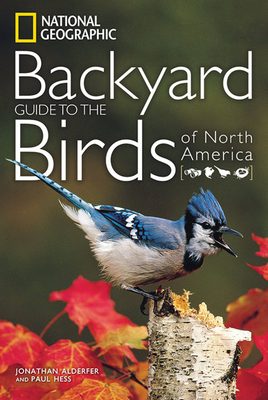Spring has sprung! As the days grow longer and warmer, and with daylight savings time's early commencement, our thoughts turn to outdoor activities.
An oft-requested book for the springtime at the Tattered Cover has been a local "backyard guide" for birds. For many years I have directed customers toward the Colorado bird guides, particularly Mary Taylor
Gray's Guide to Colorado Birds because of the superior graphics, good information, and the choice of birds included in the guide. There are also portable laminated pamphlets, with one available for Denver Birds and the other entitled Colorado Bird, but the information just includes general bird categories, bird illustrations
and bird names, so that little information can be imparted to the user other than the bird's physical appearance. No book limited to 'backyard birds' existed, and I wondered how one would be possible,
since relatively few birds--about fifteen or so--actually showed up in MY backyard the year I kept track of them. Plus, three of those birds consisted of the uncharismatic (and non-native) starlings, pigeons and House Sparrows. How could an enticing and informative guide be focused on a seemingly small number of lackluster birds? Also, would the typical East Coast backyard have anything in common with mine?
Now, brand new for 2011, National Geographic has done a book specifically labeled 'backyard birds' entitled National Geographic Guide to Backyard Birds of North America. This book does have a limited scope, as expected by its intended audience, but it imparts plenty of useful information and entices the user with appealing graphics. Just 150 species receive coverage in this guide, the ones most likely to be noticed in suburb or residential areas with some parks, wooded areas, watercourses and ponds.
The 150 species covered each have a page devoted to them, with an illustration of the bird perched and another of the bird in flight. Another set of illustrations is provided when different field marks occur for the male and female of the species (those species that are 'sexually dimorphic'). Each description includes a scientific name, an extensive descripton of the bird's appearance, similar species, voice description (unfortunately this can be a bit subjective), and range description and map.
Special note: Those seeking their first bird guide or looking for a bird guide as a gift will often be drawn to the bird books using photographs rather than drawings of the birds, as the photographs initially offer a greater visual appeal. I am among those many instructors and seasoned birders who prefer illustrations to photographs, particularly for those just beginning to bird. I've got several reasons for this preference, but the main one is that illustrations enable one to draw attention to key distinquishing and diagnotic features. Illustrators make sure the drawings clearly show the unique aspects of the bird, and they can point out and label that part of the bird needing particular attention in the field--key field marks can be highlighted.
Immediately inside the front cover of this book, one gleans information from a "quick-find" index to the common types of birds (ie. thrushes, swallows, wren, hawks etc.) found in North America, with representative pictures of these categories of birds on the back side of the same flap. Also found here is the all-important key to the range maps, with different colors indicating whether a bird typically stays in an area year-round, occurs just in the spring/summer breeding season, migrates through, or resides there in the winter.
The first section of the book contains some suggestions on feeding birds, how to set up birdhouses, landscaping with birds in mind, choosing binoculars and several other topics. In addition, throughout
the book there are sidebars on topics such as seasonal coloration and molts, how owls are able to hunt in the dark, how long different species of birds typically live, and other birdlife topics.
A unique male bird head key exists near the front of the book, and as these play a crucial role in bird ID --expert birders can generally ID a bird by head and facial features alone--this key may encourage a beginning birder to focus particularly on this crucial region of the bird, and perhaps advance more quickly in accurate bird identification.
Other nifty aspects of the book include some sharp photographs, a small glossary of bird terms in the back, and a list of suggested readings. For someone seeking a first guide or a gift that would be appealing but not overwhelming, this would be something to consider. But remember that the book's limited scope means that even birds in one's immediate neighborhood (such as the breeding Double-crested Cormorants and Black-crowned Night Herons three blocks from Colfax Ave Tattered Cover in City Park) may not be covered.
So if this book whets one's appetite for birding, it may encourage the purchase of a more comprehensive guide at a later date.
--KB

No comments:
Post a Comment